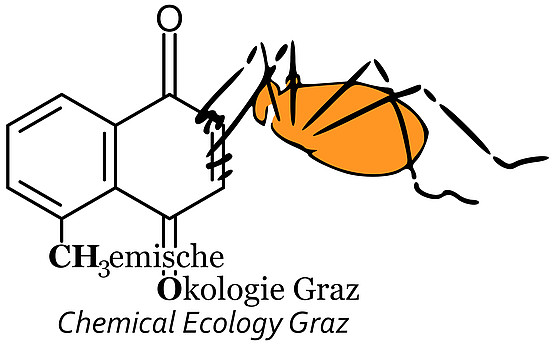FWF-Project P14863 "The oil glands of oribatid mites"
PI: Reinhart Schuster; project associate: Günther Raspotnig
"Oil glands" (glandulae lateroabdominales) represent the most striking and - by far - the largest exocrine system in the basic anatomy of oribatid mites and, additionally, have emerged as central paradigms in oribatid systematics. However, despite their obvious importance in oribatid biology and their impact on mite classification, nearly no scientific data on oribatid oil glands are available.
In an interdisciplinary effort, we plan to investigate, and characterize this largely unknown gland system amongst the Oribatida in a comprehensive way, including aspects of functional anatomy, chemistry and biological role. To gain more general insights into oil gland features, the study will focus on diverse representatives of all main oribatid groups. Finally, it should be possible to construct a model of the functional anatomy of oil glands of oribatids as well as a model of their significance in oribatid life and survival strategies.
Furthermore, following a completely new approach, we will examine chemical characters of oil glands for their suitability as tools for a systematic revision of the oribatid tree. In this way, it would become possible to gain badly needed novel characters for oribatid classification and to reconstruct relationships amongst oribatids in a strictly phylogenetic sense. This effort should result in a major modification of the traditionally used - but unsatisfactory - oribatid system. The introduction of a phylogenetically based oribatid tree would represent a major breaktrough in the whole field of acarology.
Project related publications (chronologically)
- (8) Raspotnig, G., Krisper, G. & Schuster, R. (2005): Ontogenetic changes in the chemistry and morphology of oil glands in Hermannia convexa (Acari: Oribatida). Experimental and Applied Acarology 35: 47-58.
- (7) Raspotnig, G., Schuster, R., Krisper, G., Fauler, G. & Leis, H.J. (2005): Volatile exudates from the oribatid mite, Platynothrus peltifer. Journal of Chemical Ecology 31 (2): 419-430.
- (6) Raspotnig, G., Schuster, R. & Krisper, G. (2004): Citral in oil gland secretions of Oribatida (Acari): A key component for phylogenetic analyses. Abhandlungen und Berichte des Naturkundemuseums Görlitz 76 (1): 43-50.
- (5) Matischek, T., Stabentheiner, E., Raspotnig, G. & Krisper, G. (2004): Elementaranlysen der Cuticula und des Ceroteguments bei Damaeus onustus und Eupelops torulosus (Acari: Oribatida). Abhandlungen und Berichte des Naturkundemuseums Görlitz 76 (1): 25-31.
- (4) Raspotnig, G., Krisper, G. & Schuster, R. (2004): Oil gland chemistry of Trhypochthonius tectorum (Acari: Oribatida) with reference to the phylogenetic significance of secretion profiles in the Trhypochthoniidae. International Journal of Acarology 30 (4): 369-374.
- (3) Raspotnig, G., Krisper, G. & Schuster, R. (2004): Duftstoffproduktion bei Hornmilben (Acari, Oribatida) Entomologica Austriaca 10: 11-18.
- (2) Raspotnig, G., Schuster, R. & Krisper, G. (2003): Functional anatomy of oil glands in Collohmannia gigantea (Acari, Oribatida). Zoomorphology 122: 105-112.
- (1) Raspotnig, G., Schuster, R., Krisper, G., Fauler, G. & Leis, H.J. (2001): Chemistry of the oil gland secretion of Collohmannia gigantea (Acari: Oribatida). Experimental and Applied Acarology 25: 933-946.

